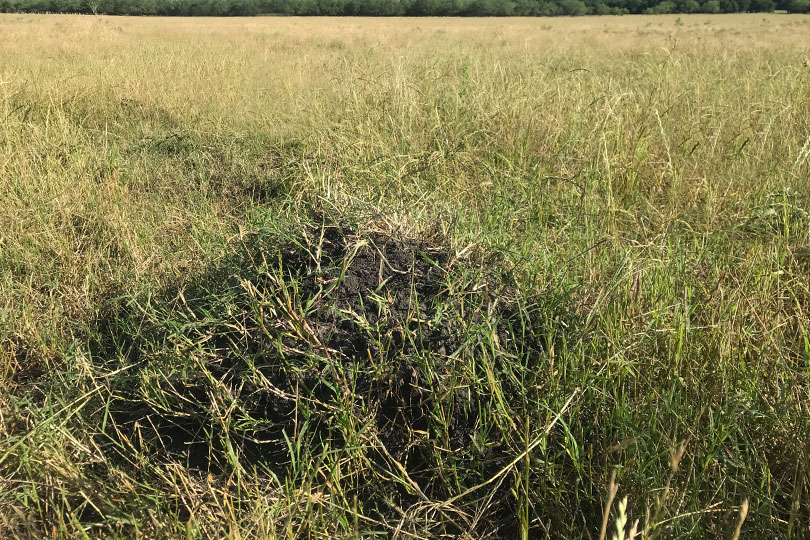By Jennifer Dorsett
Field Editor
Fire ants have been marching across Texas fields and pastures for decades.
Ant mounds damage field equipment, and the pesky insects attack newborn livestock and wildlife. Their stinging bite can harm or injure livestock, pets and people. Bites can be fatal if a large colony attacks at once.
Fire ants are found in urban, suburban and rural areas. In Texas, the estimated economic impact of red imported fire ants (RIFA) is $1.2 billion annually.
But spring is an ideal time to take control of the invasive species, according to Texas A&M AgriLife Research specialists.
“Spring is a good time to begin your imported red fire ant control, because this is the time of year when the ants are searching for food and starting to build those mounds that make them much easier to locate,” Dr. Mike Merchant, AgriLife Extension urban entomologist at the Texas A&M AgriLife Research and Extension Center in Dallas, said.
A guide co-authored by four AgriLife Extension specialists, Managing Imported Fire Ants in Agriculture, reports the two-step method is the best approach to fire ant control.
Farmers and ranchers are advised to treat areas around livestock barns, holding pens and poultry houses.
In the field, fire ants can be beneficial in cotton and sugarcane crops. According to the Extension guide, fire ants are effective caterpillar and sugarcane borer predators, and control is not recommended for these crops.
But in corn, sorghum, sunflowers, peanuts and soybeans, as well as some fruit and vegetable crops, fire ants have been reported to feed on germinating seeds, seedlings and young and developing fruit. Fire ant mounds can grow tall enough to interfere with harvesting equipment, and when it’s dry, fire ants may chew up irrigation tubing.
Under the two-step control method, semi-annual broadcast applications of fire ant bait are first employed, followed by more intensive treatment of individual mounds or nuisance colonies.
As temperatures rise in the spring, ants begin to forage to feed new broods, so it’s a good time to begin baiting, according to Merchant.
“Spring and fall are particularly good times to apply baits,” he said. “Once it gets hot and dry, as during the summer months, fire ants become less active and mounds become less visible as ants go deeper into the soil.”
Fire ant colonies can be hard to find, so baits also give applicators the advantage of not hunting down the mounds over large fields or pastures, AgriLife Extension Entomologist Dr. Robert Puckett added.
“Fire ant colonies can be difficult to locate, especially over a large area, so using a bait is less costly in terms of time and the amount of product needed for treating larger areas,” Puckett said. “With baits, ants pick up the bait and return it to the nest, so they do most of the work for you.”
The second step is to spot treat persistent or large mounds as necessary.
“Because fire ant mounds are most visible this time of year, especially after a rain, they are easier to locate in order to do the second step,” Merchant said. “This involves treating the largest or most troublesome mounds with an individual mound treatment, such as a liquid drench or some form of granular, non-bait insecticide or dust.”
Combining these two steps should help farmers and ranchers keep their fields and animals safe and ant-free, according to AgriLife Extension specialists.
For more information on AgriLife Extension’s Texas Imported Fire Ant Research and Management Project, visit http://fireant.tamu.edu.

